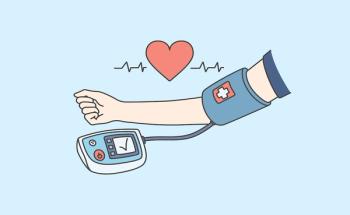
Distinguishing Asthma From Other Pulmonary Diseases
At a session of the CHEST Annual Meeting 2021, specialists reviewed the need for a thorough diagnosis to tell whether a patient's symptoms are caused by asthma or another pulmonary condition.
When is a patient’s wheezing, dyspnea, and other respiratory symptoms signs of asthma, and when is it something else? At a session at the Chest Annual Meeting 2021, specialists reviewed the importance of a thorough diagnosis, especially for individuals not responding to therapy.
Doctor should suspect excessive central airway collapse in patients with difficult to control obstructive lung disease, said Maria Velez MD, FCCP, a pulmonologist at University of Texas (UT) Health, San Antonio, Texas. Velez presented the case of a male, aged 32, with a sudden onset of decreased exercise capacity and progressive dyspnea.
He was treated for
An exercise bronchoscopy revealed excessive dynamic airway collapse, as there was “complete obliteration of his airway lumen by the posterior wall of the trachea,” she said.
Starting on continuous positive airway pressure (CPAP) provided some relief but not enough to resume normal activities, Velez said.
Her presentation was part of an on-demand session called “All That Wheezes Is Not Asthma;” the title of the session came from a famous 1865 quote by a Boston otolaryngologist who was concerned about foreign bodies being aspirated and causing wheezing and being misdiagnosed as asthma.
Velez focused on expiratory central airway collapse (ECAC), which may present as either 2 conditions: trachea-bronchomalacia (TBM) or excessive dynamic airway collapse (EDAC). Both are characterized by a reduction of airway lumen during expiration.
While there are structural and other differences between the two, both present similarly and have similar diagnostic evaluation and therapies.
Obesity is a factor, and comorbidities, including acid refux, must be aggressively controlled, Velez noted.
TBM is triggered by chronic inflammation and ischemia, and EDAC may be the result of peripheral airway obstruction from emphysema, chronic bronchitis, or asthma, as well as the stress caused by obesity.
Prevalence of these conditions is unclear, but may be up to 10% in the general population, up to 23% in patients with various respiratory symptoms requiring a bronchoscopy, and 37% in
The conditions are progressive, and symptoms include a barking cough, dyspnea, difficulty expectorating sputum, recurrent infections, syncope, wheezing or stridor, and progressive hypercanic respiratory failure
The diagnosis is based on a patient’s clinical history, and Velez said providers should note if symptoms treatment resistant or out of proportion to the degree of the obstructions.
“This is where clinicians have to be very vigilant,” she said, particularly if the patient has asthma, COPD, or cystic fibrosis.
PFTs are not useful, and instead, diagnosis is made through a CT of the chest with dynamic expiratory imaging, and also direct visualization through a dynamic flexible bronchoscopy. Both procedures are used not only for diagnosis but also characterization of the severity of the disease and planning for future procedures.
In the case of the patient, he had a dynamic Y stent inserted and saw symptom improvement. After a few weeks, the stent was removed and he underwent a tracheobronchoplasty and resumed regular activity with no limitations.
If patient is not a surgical candidate, Velez said, a long-term stent may be possible, but it is not ideal, she stressed. Up to 38% of patients experience significant complications, including infection, respiratory failure, pulmonary embolism, and atrial fibrillation. Long-term stenting has a mortality rate of 1% to 3%.
Alternative Diagnosis to Severe Asthma
In a related part of the session, Diego J. Maselli, MD, FCCP, director of the Severe Asthma Program at UT Health, reflected on the 1865 quote and said in his personal view, “asthma is heterogenous but there is a limit.”
He noted a 2017 multicenter cohort study published in JAMA, which enrolled 701 randomly selected adults who had an asthma diagnosis from a physician. The study involved home peak flow monitoring, spirometry, bronchial challenge testing, and controlled withdrawal of medications. Current asthma was excluded in 33% of the patients.
“We have to be skeptical and suspicious in the diagnosis of asthma, particularly when people don’t respond,” he said.
The probability of asthma increases with classical features of the disease, such as symptoms that vary over time and intensity; symptoms that are worse at night or early in the morning; flares triggered by viral infections, exercise, or other exposures.
As compared with the hallmark wheezing, cough, and chest tightness in asthma, respiratory symptoms in other conditions are different, such as isolated cough, chronic sputum, chest pain, and vertigo and paresthesia.
Tests that can be conducted to confirm asthma include response after 4 weeks of ICS therapy. response to bronchodilators, serial spirometry between visits, peak expiratory flow, and a positive bronchial challenge to methacholine or mannitol.
A CT scan should be considered for fixed obstructions, rapid decline in lung function, recurrent fevers or systemic symptoms. a chest x-ray with pulmonary infiltrates, lesions, or pleural infusions, or abnormalities in the flow-volume loop seen on a PFT.
Newsletter
Stay ahead of policy, cost, and value—subscribe to AJMC for expert insights at the intersection of clinical care and health economics.







































